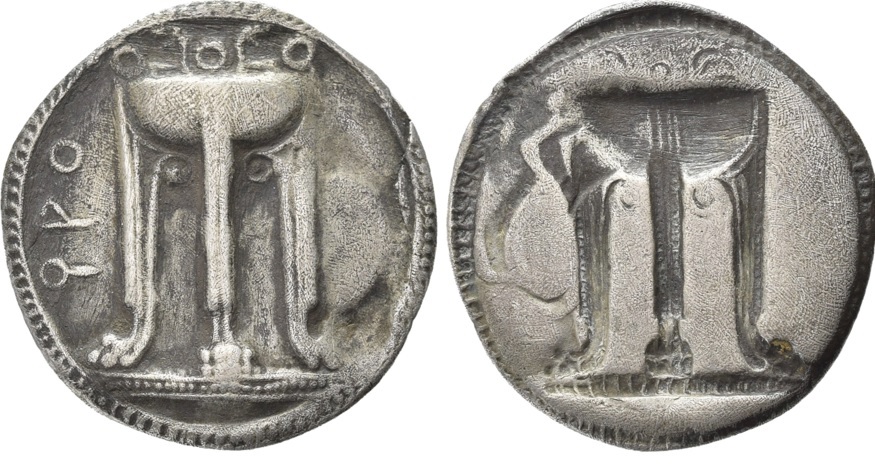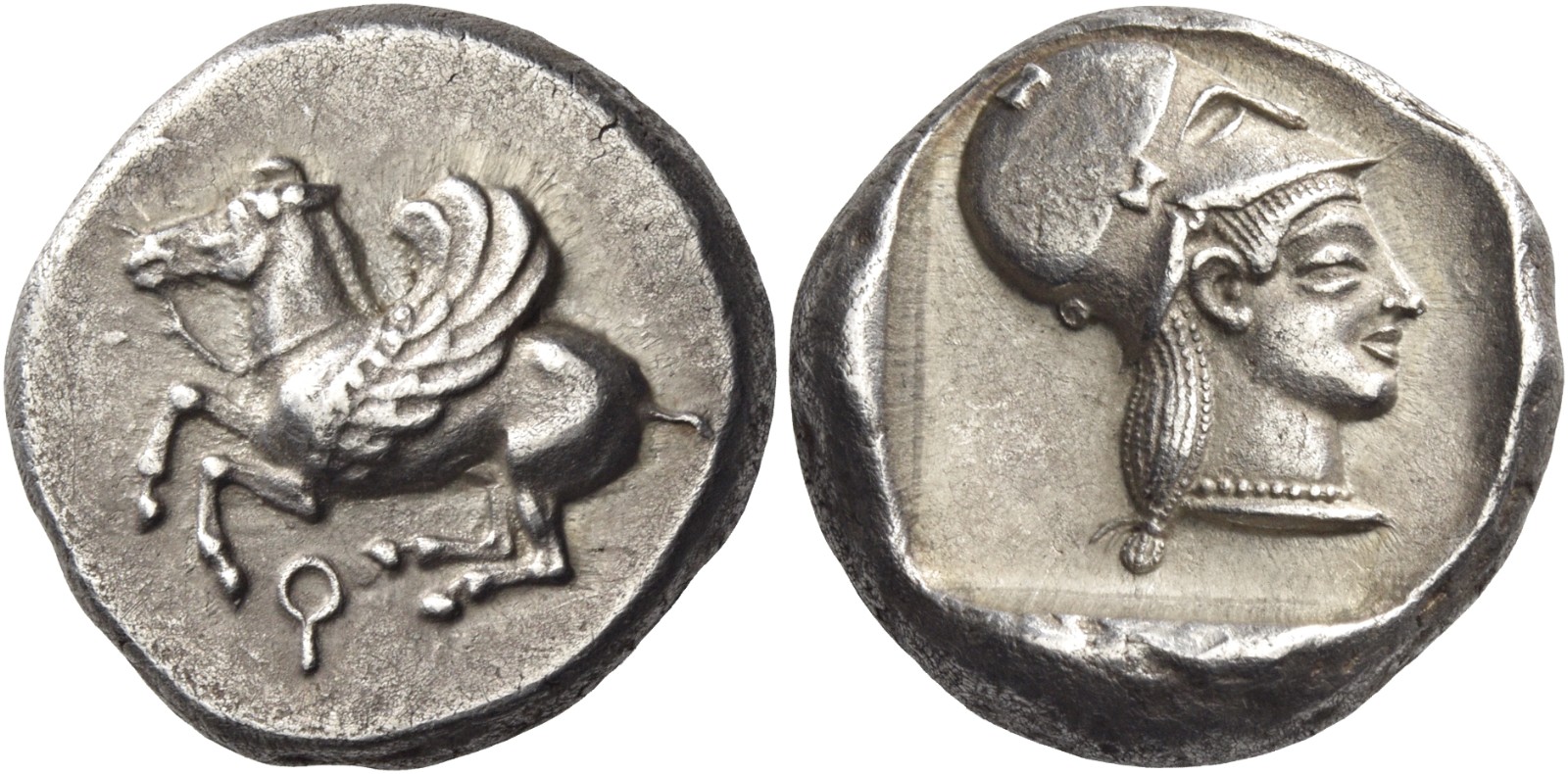17671 - Croton (nomos tripod/incuse tripod) over Corinth (Pegasus/Athena) (Berlin, MK, 18257568)
From SILVER
480 BCE - 430 BCEϘPO
Images
Overstriking coin

Croton 2442 Berlin.jpg [1]
Location/history
| Museum collectionMuseum collection: | Berlin, MK, 18257568 - Arthur Löbbecke - 1906 | |
| Private collection(s)Private collection(s) ᵖ: | Arthur Löbbecke - 1906 |
Overstriking coin
Description
| ObverseInscription or printing placed on the obverse.: | ϘPO (Greek) Tripod. In right field, marsh-bird standing right. Border of dots. | ReverseInscription or printing placed on the reverse.: | Tripod. Hatching border (incuse) |
Mint and issuing power
| MintIdentifies the place of manufacture or issue of a numismatic object.: | Croton | Ancient regionAncient region. | Bruttium | Modern countryModern country: Italy | AuthorityIdentifies the issuing power. The authority can be "pretended" when the name or the portrait of X is on the coin but he/she was not the issuing power. It can also be "uncertain" when there is no mention of X on the coin but he/she was the issuing power according to the historical sources: |
Chronology
| FromIdentifies the initial date in a range assigned in a numismatic context. 480 BCE toIdentifies the final date in a range assigned in a numismatic context.. 430 BCE | Classical 480-323 BC |
Physical description
| MetalThe physical material (usually metal) from which an object is made.: Silver |
WeightWeight of the numismatic object (in grams). in grams: 7.767.76 g <br />7,760 mg <br /> | AxisDescribes the directional relationship between the obverse and reverse of a numismatic object.: 1212 mm <br />1.2 cm <br /> | |
| DiameterDescribes diameter of an object (in mm).: 2929 mm <br />2.9 cm <br /> | |||
References
| Coin referenceReference of the Coin: | Coin series referenceReference to coin series study: | Noe 19571Noe 1957, HN Italy2HN Italy, n° 2102, 2104 and 2106, HGC 13HGC 1, n° 1449 | |
| Coin series web referenceCoin series web references: | |||
Overstruck type
Description
| ObverseInscription or printing placed on the obverse.: | Pegasos flying to left | ReverseInscription or printing placed on the reverse.: | Head of Athena to right, wearing Corinthian helmet |
Mint and issuing power
| MintIdentifies the place of manufacture or issue of a numismatic object. ᵖ: | Corinth | Ancient regionAncient region. ᵖ | Corinthie | Modern countryModern country: Greece | AuthorityIdentifies the authority in whose name (explicitly or implicitly) a numismatic object was issued. ᵖ: |
Chronology
| FromIdentifies the initial date in a range assigned in a numismatic context. 540 BCE toIdentifies the final date in a range assigned in a numismatic context.. 430 BCE | Archaic until 480 BC |
Physical description
| DenominationTerm indicating the value of a numismatic object. Examples: tetradrachm, chalkous, denarius. ᵖ: | stater |
References
| Coin type referenceReference to coin series study ᵖ: | Ravel 19364Ravel 1936, Calciati 19905Calciati 1990 |
Additional data
| Frequency of overstrikesFrequency of overstrikes: | frequent | Level of confidenceLevel of confidence of the identification: | sure |
| RemarksRemarks: | |||
References
- ^ Noe, Sydney P. (1957), "Overstrikes in Magna Graecia", American Numismatic Society. Museum Notes 7, p. 13-42, pl. 5-14.
- ^ Rutter N. Keith et alii (eds.) (2001), Historia Numorum Italy, London, xvi, 223 p., 43 pl.
- ^ Hoover, Oliver D. (2018), The Handbook of Greek Coinage Series, Volume 1. Handbook of Coins of Italy and Magna Graecia, Sixth to First Centuries BC., Lancaster-London, 2018, lxi, 527 pages, 23 cm
- ^ Ravel, Oscar E (1936), Les "Poulains" de Corinthe : monographie des statères corinthiens. Tome I: de 650 à 415 J.-C., Basel.
- ^ Calciati, Romolo (1990), Pegasi, Mortara, Edizioni I.P..
